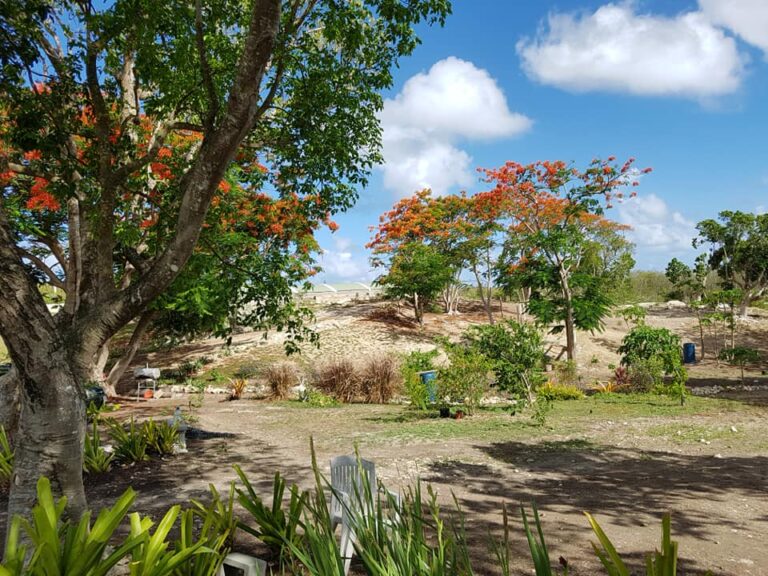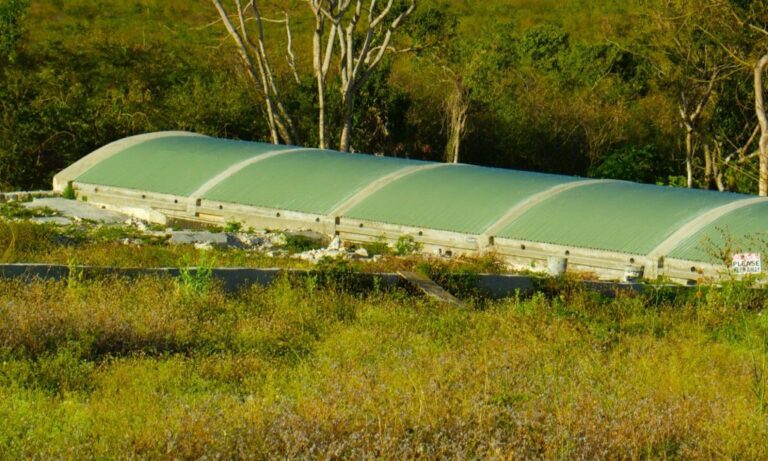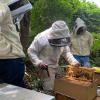The Barnes Hill Community Reservoir: Restoration and Work Towards Establishing an OECM
Water shortages during a four-year drought led to serious impacts on the Barnes Hill community on the island of Antigua and Barbuda. In response to the lack of fresh water and the impact on the community, the Barnes Hill Community Development Organization (BHCDO) was established in 2015. The Marine Ecosystems and Protected Area (MEPA) Trust supported its formation and legal registration.
Community nurse Ms. Elaine Davis – current president of the BHCDO – led efforts when it was discovered that the drought was having grave impacts on personal hygiene and sanitary practices of children and seniors.
A Vulnerability and Risk Assessment was conducted and the response was to restore a community reservoir built in 1893 by the British Government, which was lying in ruins and covered over by large trees (largely invisible to the community). The reservoir was 1 of 5 located in specially selected locations across the island that were built to provide villages with fresh water in times of drought. Barnes Hill has numerous mentions with records of letters of Administration and Communication in the Archives of Antigua and Barbuda.
The reservoir has many stories, but Barnes Hill suffered from water shortages and was forced to get pipe borne water twice per week. Many times, this was not available and the village tank was required to be supplemented by a water truck weekly, as the catchment at times could only supply 1-2 buckets daily to each person. The drought was so terrible during this period that the water of other ponds — although unfit for human consumption — was a great help as it could be used for washing.
The plan is to not only restore the reservoir facility but an application has been made for the area to be declared as a new National Heritage Site with green spaces and historical trails. The characterization as Other Effective Area-based Conservation Measures (OECMs) is a work in progress.
Other effective area-based conservation measures (OECMs) are a new conservation approach, separate from protected areas, where conservation is achieved mainly as a by-product of other management. A definition was agreed at the 14th Conference of Parties of the Convention on Biological Diversity in 2018:
‘A geographically defined area other than a Protected Area, which is governed and managed in ways that achieve positive and sustained long-term outcomes for the in-situ conservation of biodiversity, with associated ecosystem functions and services and where applicable, cultural, spiritual, socio–economic, and other locally relevant values’.
This definition covers three main cases:
1. ‘Ancillary conservation’: areas delivering in-situ conservation as a by-product of management, even though biodiversity conservation is not an objective (e.g. some military training grounds, protected marine war graves and freshwater protection zones).
2. ‘Secondary conservation’: active conservation of an area where biodiversity outcomes are only a secondary management objective (e.g. some conservation corridors).
3. ‘Primary conservation’: areas meeting the IUCN definition of a protected area, but where the governance authority (e.g. community, Indigenous peoples’ group, religious group, private landowner) does not wish the area reported as a protected area.
Project & History
The reservoir is an important water management system and research in the archives has shown that the reservoir provided significant value to the history of the island and to the local community experience.
The BHCDO Park has developed into a green recreational space where visitors and locals can experience local culture, food, and art, and have conversations with the people from the community. The taxi drivers who bring the guests will also benefit by adding to their knowledge.
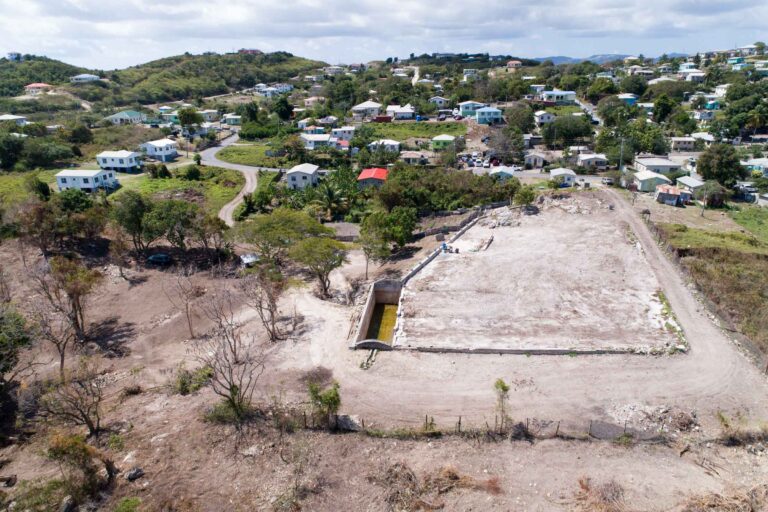
Former Ambassadors from New Zealand, Germany and Australia have visited the BHCDO Park. It was one of the site visits selected by the Secretariat for the Convention on Biodiversity when Antigua hosted the training workshop for the Caribbean sub-region on ‘Community-Based Monitoring, Indicators on Traditional Knowledge and Customary Sustainable Use and Community Protocols’ within the Strategic Plan for Biodiversity 2011-2020, in December 2015. The Park was the site visit for the Sixth Annual Climate Finance Readiness Seminar for the National Implementing Entities (NIE) of the Adaptation Fund (AF) held from August 5th – 9th, 2019. 27 countries represented by 63 participants inclusive of GCF, GEF, World Bank and AF visited to see community-based adaptation and restoration efforts in practice.
Schoolchildren across the island have also been using the site for education and knowledge learning. BHCDO is featured in the 6th National Report and a case study featured in the Local Biodiversity Outlook 2, a supplement to the UNCBD – Global Biodiversity Outlook 5.
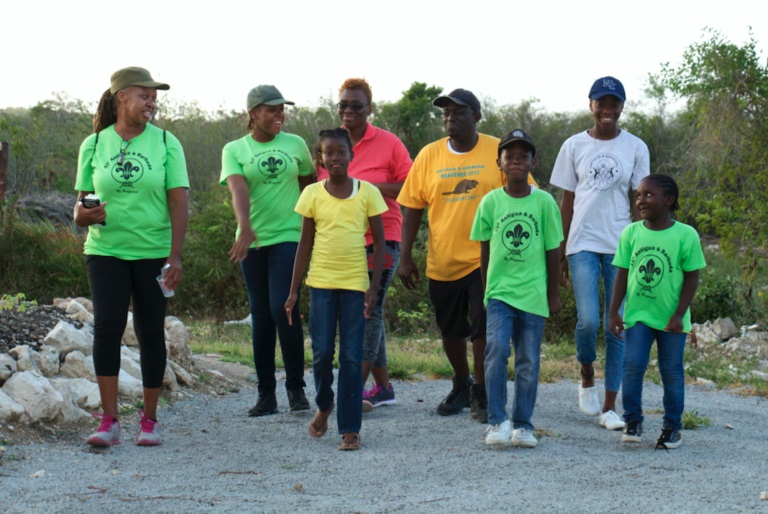
Biodiversity values are high
The area, which was once a waste dump and covered with invasive bush, has now been transformed with a wide variety of different flowers and an abundance of plants grown for herbs, food, medicine and drinks. Many of the birds visiting the area are contributing to pollination and the village once known as the ‘sugar apple capital’ of Antigua is regaining its name through the reforestation of native trees.
Tree planting has been a hallmark of the park. Bridgette Lawrence, a BHCDO champion collects local seeds and has taken on the responsibility to sow, produce and care for many local varieties of plants planted in the park. Life, health and ecosystems are being restored. These transformations are having impacts on people and on nature. Trellises in the park facilitate running plants.
Livelihoods and commerce
To solidify the heritage and culture of this area, brick oven baking facilities must be included. This setting will facilitate numerous small businesses to be owned and operated by members of the community with their expertise. Research has shown that Barnes Hill Village held the distinction of producing some of the top bread and pastry specialists in Antigua and Barbuda. Men and women of the earlier generations recall reporting to work in the cane and cotton fields with some of these products safely tucked away in sturdy bags. They would become the envy of colleagues from other parts of the island who did not have access to these treats; especially the way they were produced by the bakers of Barnes Hill Village.
Nature walks – the trail leading from the park to the Jabberwock beach has been found with plans for its further development. This trail leads and ends at the manhole of an important water system that once functioned on the island. In the park, historic stone ponds have been created on-site demonstrating practices used by the villagers many years ago to hold and store water.

Camping – A activity to be encouraged at the project site will be camping by groups such as the Scouts, Brownies, Girl Guides etc. The facilities will be tailored to ensure these activities are challenging and enjoyable.
Music – BHCDO holds the keys to unlocking a program that will save the Fife Band in Antigua and Barbuda. The plans are to attract a cadre of young musicians who will be able to diversify their skill set and become exponents of this unique form of entertainment.
Board Games – As there are many trees in the reservoir compound and the BHCDO has attracted board game enthusiasts, using the shade and coolness of the facility to attract players on a daily basis.
Partnerships with the private sector and stakeholders
During the development of various components of the Nature Park integration across many conventions has been enabled that ties into the pillars of the Escazu Agreement. Many partnerships have been established with the private sector and government. One such agency is the utility company which provided 5 commercial outdoor solar lights mounted on concrete pillars. The solar lights were installed in the park to provide evening lighting enabling the BHCDO to host and sanction events. In addition, a major private sector family has pledged to donate adjoining lands used previously as a sugar estate.
There continues to be assistance from many corporate partners. At the national level, this project has diversified the country’s tourism product.
Management and Governance
The bottom-up approach to community conservation and management of its natural resources is fueled by collective voluntary actions driven by passion, determination and commitment. The MEPA trust and the Ministry of Tourism-Sustainable Development Unit work closely and consistently with the BHCDO on ongoing mentoring capacities.
To learn more about the BHCDO and its work towards establishing the park as an OECM visit: https://barneshillcdo.org
Article and images submitted by the Barnes Hill Community Development Organization (BHCDO).
Text has been lightly edited for length.



